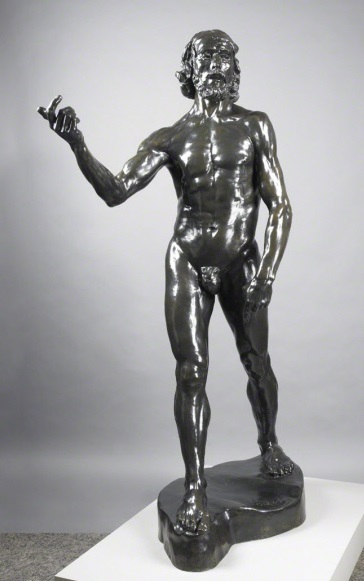Auguste Rodin, Saint John the Baptist, 1878

The Work
This sculpture is larger than life, to prove that the artist had sculpted it without making a mold from a living body. The saint is walking and speaking, and this natural movement is accentuated by his visible muscles. The artist’s decision to show the saint without clothing was shocking to the public of his time, but one may see in this a desire to show the universal nature of the human condition. Another version of this sculpture is in the Musée d’Orsay in Paris.
Historical Moment
The Third Republic (1870-1914) was an era of peace in France. In 1878, Paris held a Universal Exposition (World’s Fair), to celebrate progress in technology, commerce, and the arts. The French government would commission Rodin to make several public monuments.
The Genre
Romanticism was a movement that began near the end of the 18th century and had its strongest impact in the 19th century. The image sometimes told a familiar story from literature, and the word "romantic" derives from the word "roman" in French, meaning "novel" in English, a literary work of fiction. In romantic sculpture, artists sought to engage the viewer’s emotions with dramatic effects of facial expression and movement.
The Artist
Auguste Rodin (1840-1917) was born in Paris to a family of low social status. He was admitted to the School of Decorative Arts, and he studied sculpture with Antoine-Louis Barye. He did not have success at the beginning of his career, because his sculpture contradicted the rules of classicism by incorporating intense emotion and eroticism. Later, however, he became the most famous French sculptor in the world. He often made several versions of his sculptures in different sizes. His best-known works are The Thinker (1882) and The Kiss (1886).

